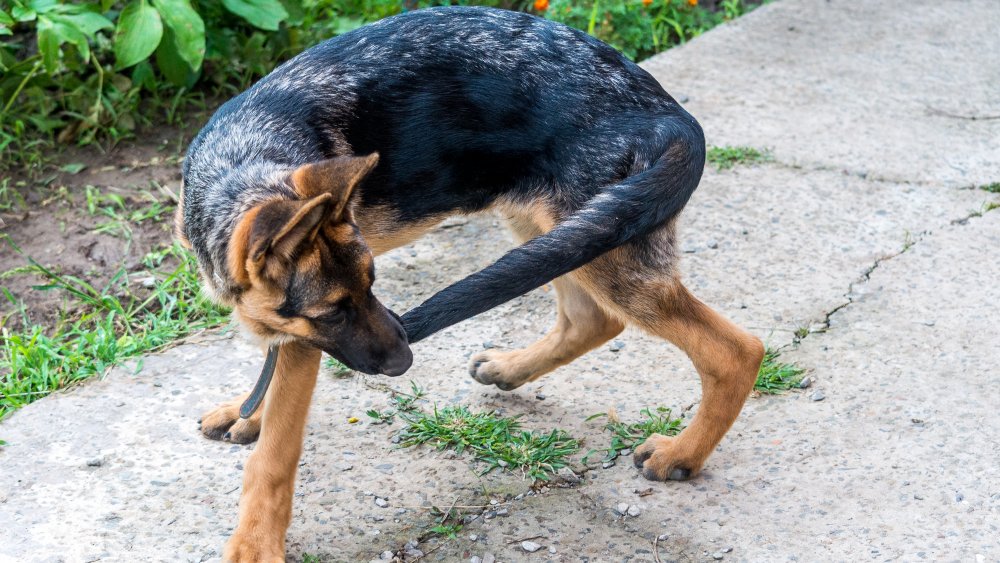The Real Reason Dogs Wag Their Tails
The world is weirder than you think, especially the animal kingdom. Tale Oreo cows, for instance. They're cows, but their color pattern is vaguely reminiscent of a cookie. Yet nobody thinks the cookie looks like that cow? Shouldn't fried Oreos be called Oreo hamburgers or something? Weird. You know what's even weirder? Dog tails. They aren't arms or legs or butt horns. Seriously, why don't dogs have horns on their butts to defend them from potential predators? Do people even know what dog tails actually do?
As Gizmodo notes, the word "penis" comes from the Latin term for "tail," so one might imagine that long ago, man's best friend gave man an inferiority complex because of the massive tail size disparity between the species. And did people think that dogs wagged their butt dongs to make puppies? Obviously, man has come a long way since his dong-tail phase. But dog tails are still weird. What's up with that whole wagging thing?
A wagging tail has a tale to tell
Contrary to what etymology might have you think, a dog's tail is not a reproductive organ. It functions sort of like butt-based semaphore, which Britannica explains is a visual signaling system whereby lights or flags are used to convey messages. But instead of someone changing the position of flags to herald the end of the world (that's a real signal, by the way), a dog uses the orientation and movement of its tail to communicate different emotions.
Per Live Science, the normal orientation of a dog's tail indicates that it's in a "relaxed" state of mind. This varies by breed in accordance with the shape of the tail. For instance, "pugs have tails that curl upward, and greyhounds have tails that rest slightly between their legs" while most dogs have tails that rest near their heels. When a dog's tail points straight outward, it's probably feeling curious, meanwhile a tail standing upright is a red flag that your canine is feeling aggressive. A fast back-and-forth typically signals excitement. The real question is: when a dog chases its own tail, is that just semaphore/metaphor for wanting some tail?

